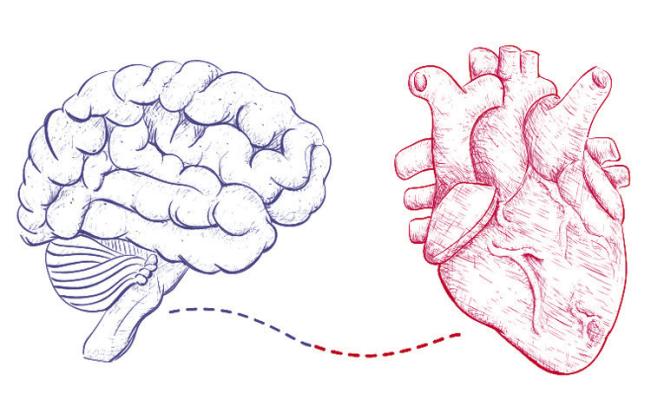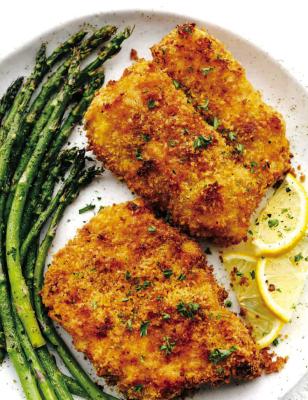Heart and Brain Connection
Remember the song “The Skeleton Dance” from your childhood? Here’s how it went: “The toe bone’s connected to the foot bone, the foot bone’s connected to the ankle bone, the ankle bone’s connected to the leg bone.”
Researchers have found the same thing applies to our heart and brain -- they’re connected. It seems all our body is connected, from our bones to our heart to our brain.
When one is healthy, it helps the other. Researchers have found the same factors that raise the risk for heart disease also impact brain disease, including stroke, Alzheimer’s disease and other dementia. And for the first time, the American Heart Association’s 2022 Heart Disease and Stroke Statistics annual report includes a chapter on brain health. Simply put, the heart pumps blood through the vascular system to every part of the body. Problems with the heart or vascular system can impact the brain.
So, what can you do to keep your heart and brain healthy?
No. 1: Choose a healthy diet, emphasizing plant foods, seafood and dairy products. Try to limit highly processed foods (cakes and sweets with refined grains, added sugars and sodium). Choose unsaturated fats from olive and canola oils over saturated fats. Choose more fish, nuts and seeds.
No. 2: Move more. Any movement counts. It’s especially important to stand often rather than sitting for long periods.
No. 3: Get plenty of sleep. The latest research suggests seven hours of sleep a night.
No. 4: Avoid tobacco products including e-cigarettes, vaping and secondhand smoke.
No. 5: Know your numbers. Excess weight, high blood pressure, high glucose and high blood cholesterol all increase the risk for vascular disease. Get regular bloodwork to see if medication is needed.
Q and A Q: Should I take my vitamin or mineral supplement with food or by itself?
A: It depends on the supplement. Calcium supplements, for example, come in two forms: calcium carbonate and calcium citrate. Calcium carbonate requires stomach acid to be properly absorbed, so it’s best taken with a meal since the presence of food in the stomach stimulates acid production. Calcium citrate can be taken with or without food because it doesn’t require stomach acid for absorption. Iron is best absorbed on an empty stomach. Vitamin C enhances absorption of iron, so taking an iron supplement with a glass of orange juice (or an orange) may help absorption. Multivitamins contain nutrients with different requirements. You can take it with a meal if you want. Vitamins A, D, E and K are fat-soluble vitamins, so it’s best to take some fat.
those with a meal that contains RECIPE I’m still learning to use my air fryer, but so far, I find it helpful to get a quick, healthier dinner on the table. Here’s a recipe from Eating Well magazine for air-fryer fish. The recipe suggests cod, but any white fish can be used.
AIR-FRYER COD Servings: 4 3 bay leaves 1 teaspoon celery salt 1 teaspoon paprika 1 teaspoon cayenne pepper 1 teaspoon ground pepper 1 teaspoon garlic powder 1/4 teaspoon dry mustard 1/8 teaspoon ground ginger 1/8 teaspoon ground allspice 1/2 cup all-purpose flour 1 large egg, beaten 1?1/4 cups whole-wheat panko breadcrumbs 1 pound cod fillets (about 3/4-inch thick), cut into 8 pieces Cooking spray 1 tablespoon sliced fresh chives 1 lemon, cut into wedges Combine bay leaves, celery salt, paprika, cayenne, pepper, garlic powder, dry mustard, ginger and allspice in a spice grinder. Process until the bay leaves are pulverized, about 45 seconds. Place flour in a shallow bowl; stir in 1 tablespoon of the spice mixture. Place egg in a separate shallow bowl. Place panko and 1 tablespoon of the spice mixture in a third shallow bowl; stir to combine. Season cod evenly with the remaining 1 teaspoon spice mixture. Dredge 1 piece of cod in the flour mixture, shaking off excess. Dip in the egg to coat, letting excess drip off. Dredge in the panko mixture, pressing lightly to adhere. Place on a plate or baking sheet. Repeat with the remaining pieces. Preheat an air fryer to 400 F for 5 minutes. Coat the prepared cod with cooking spray. Place half of the cod pieces in the air fryer basket in an even layer, leaving space between the pieces. Cook for 9 minutes; carefully flip and continue cooking until golden brown and the fish flakes easily with a fork, 2 to 3 minutes more. Transfer to a serving plate and cover to keep warm. Place the remaining cod pieces in the basket and repeat. Sprinkle with chives and serve immediately with lemon wedges. Serves 4 (serving size 4 ounces).
Per serving: 185 calories; 22 grams protein; 18 grams carbohydrates; 2 grams fat; 100 milligrams cholesterol; 2 grams fiber; 407 milligrams sodium.
Charlyn Fargo is a registered dietitian with SIU Med School in Springfield, Illinois. For comments or questions, contact her at charfarg@aol. com or follow her on Twitter @ NutritionRD. To find out more about Charlyn Fargo and read features by other Creators writers and cartoonists, visit the Creators website at www. creators.com.


